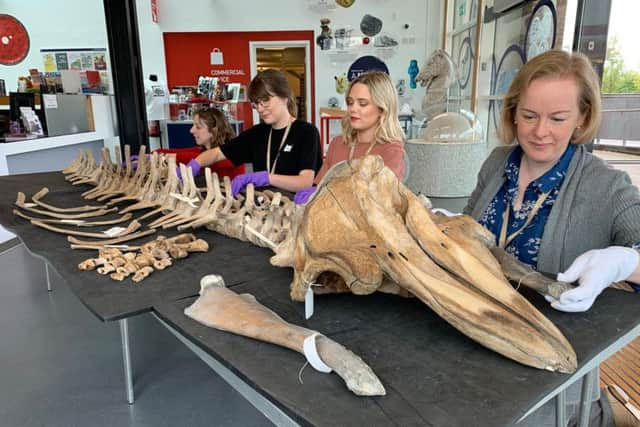Here's your chance to name Leeds’s own Victorian pilot whale
and live on Freeview channel 276
Now there’s just one piece missing to make the story of Leeds’s incredible Victorian long-finned pilot whale complete: the perfect name.
The remains of the magnificent 152-year-old aquatic animal will go on display at Leeds City Museum this October, as part of a new eco-awareness project, made possible by money raised by National Lottery players.


The whale was cruelly killed by fishermen 152 years ago.
Advertisement
Hide AdAdvertisement
Hide AdIts skeleton was brought into the Leeds Discovery Centre in May this year.
According to the Leeds Museums and Galleries team, the ill-fated marine mammal was collected back in 1867 off the coast of Scotland when a group of fishermen spotted a pod of whales near Leith, Scotland.
Deliberating stranding the animals, they killed the entire group for meat and blubber.
The whale has been in pieces in the museum store - but with the help of funding from the Leeds Philosophical and Literary Society, the Friends of Leeds City Museums and the National
Advertisement
Hide AdAdvertisement
Hide AdLottery Heritage Fund staff have been cleaning, conserving and articulating the bones ahead of the display to the public in autumn.
Once on display, the Leeds whale will be a permanent exhibit and will be used to kick-start a programme of workshops, discussions and talks by experts on whales and the sea.
The museum’s collection staff will also be running events on object conservation and whale anatomy, before the animal goes on display.
Ideas for names can be inspired by anything from stories and books to nature and the sea.
Advertisement
Hide AdAdvertisement
Hide Ad* Anyone with ideas for a name for the whale can submit via email: naturalscience@leeds.gov.uk by September 27. Entries can also come on social media, by tweeting @LeedsCityMuseumPILOT WHALES: FACTFILE
Found in the North Atlantic and Southern Hemisphere, long-finned pilot whales are named for their unusually long pectoral fins and the once prominent belief that groups had a leader, or “pilot”.
Reaching more than 6.5 metres in length and weighing more than five tonnes, they live in large groups of up to 150 and feed mostly on fish, communicating while they hunt with a series of characteristic clicks, whistles and buzzes.
Historically a target for the whaling industry, tens of thousands of long-finned pilot whales were captured and killed in the 1940s and 50s. Today, the Faroe Islands are home to the only remaining large scale long-finned pilot whale hunts in the world.